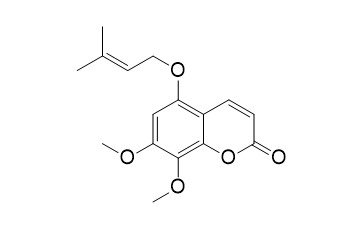Neoartanin
Neoartanin is a betaine pigment isolated from the fresh root of red beet with antioxidant capacity.
Inquire / Order:
manager@chemfaces.com
Technical Inquiries:
service@chemfaces.com
Tel:
+86-27-84237783
Fax:
+86-27-84254680
Address:
1 Building, No. 83, CheCheng Rd., Wuhan Economic and Technological Development Zone, Wuhan, Hubei 430056, PRC
Providing storage is as stated on the product vial and the vial is kept tightly sealed, the product can be stored for up to
24 months(2-8C).
Wherever possible, you should prepare and use solutions on the same day. However, if you need to make up stock solutions in advance, we recommend that you store the solution as aliquots in tightly sealed vials at -20C. Generally, these will be useable for up to two weeks. Before use, and prior to opening the vial we recommend that you allow your product to equilibrate to room temperature for at least 1 hour.
Need more advice on solubility, usage and handling? Please email to: service@chemfaces.com
The packaging of the product may have turned upside down during transportation, resulting in the natural compounds adhering to the neck or cap of the vial. take the vial out of its packaging and gently shake to let the compounds fall to the bottom of the vial. for liquid products, centrifuge at 200-500 RPM to gather the liquid at the bottom of the vial. try to avoid loss or contamination during handling.
Molecules.2023, 28(16):6025.
Genes Genomics.2020, 10.1007
Revista Brasileira de Farmacognosia2021, 31:794-804.
Industrial Crops and Products2023, 199:116746.
J Ethnopharmacol.2017, 198:91-97
Cosmetics2025, 12(3), 108
Pharmacognosy Journal.2020, 12(2), p232-235.
Front Plant Sci.2022, 13:982771.
PLoS One.2017, 12(3):e0173585
Comput Biol Med.2024, 178:108775.
Related and Featured Products
J Agric Food Chem . 2013 Jul 3;61(26):6465-6476.
Studies on nonenzymatic oxidation mechanisms in neobetanin, betanin, and decarboxylated betanins[Pubmed:
23789904]
A comprehensive nonenzymatic oxidation mechanism in betanin plant pigment as well as its derivatives, 2-decarboxybetanin, 17-decarboxybetanin, 2,17-bidecarboxybetanin, and neobetanin, in the presence of ABTS cation radicals was investigated by LC-DAD-ESI-MS/MS. The main compounds formed during the first step of betanin and 2-decarboxybetanin oxidation are 2-decarboxy-2,3-dehydrobetanin and 2-decarboxyneobetanin, respectively. In contrast to betanin, the reaction mechanism for 2-decarboxybetanin includes more oxidation pathways. Parallel transformation of 2-decarboxybetanin quinone methide produces neoderivatives according to an alternative reaction that omits the presumably more stabile intermediate 2-decarboxy-2,3-dehydrobetanin. The main oxidation product after the first reaction step for both 17-decarboxybetanin and 2,17-bidecarboxybetanin is 2,17-decarboxy-2,3-dehydrobetanin. This product is formed through irreversible decarboxylation of the 17-decarboxybetanin quinone methide or by oxidation of 2,17-bidecarboxybetanin. Oxidation of neobetanin results primarily in a formation of 2-decarboxy-2,3-dehydroneobetanin by a decarboxylative transformation of the formed neobetanin quinone methide. The elucidated reaction scheme will be useful in interpretation of redox activities of betalains in biological tissues and food preparations.
Acta Sci Pol Technol Aliment . Jul-Sep 2016;15(3):257-265.
The effect of thermal treatment on antioxidant capacity and pigment contents in separated betalain fractions[Pubmed:
28071025]
Background: Increased consumption of fruits and vegetables significantly reduces the risk of cardio-vascular disease. This beneficial effect on the human organism is ascribed to the antioxidant compounds these foods contain. Unfortunately, many products, particularly vegetables, need to be subjected to thermal processing before consumption. The aim of this study was to determine the effect of such thermal treatment on the antioxidant capacity and pigment contents in separated fractions of violet pigments (betacyanins) and yellow pigments (betaxanthins and betacyanins).
Methods: Fractions of violet and yellow pigments were obtained by separation of betalain pigments from fresh roots of 3 red beet cultivars using column chromatography and solid phase extraction (SPE). The betalain pigment content was determined in all samples before and after thermal treatment (90°C/30 min) by spectrophotometry, according to Nilsson's method [1970] and antioxidant capacity was assessed based on ABTS. Betalain pigments in the separated fractions were identified using HPLC-MS.
Results: After thermal treatment of betacyanin fractions a slight, but statistically significant degradation of pigments was observed, while the antioxidant capacity of these fractions did not change markedly. Losses of betacyanin content amounted to 13-15% depending on the cultivar, while losses of antioxidant capacity were approx. 7%. HPLC/MS analyses showed that before heating, betanin was the dominant pigment in the betacyanin fraction, while after heating it was additionally 15-decarboxy-betanin. Isolated fractions of yellow pigments in red beets are three times less heat-resistant than betacyanin fractions. At losses of yellow pigment contents in the course of thermal treatment reaching 47%, antioxidant capacity did not change markedly (a decrease by approx. 5%). In the yellow pigment fractions neobetanin was the dominant peak in the HPLC chromatogram, while vulgaxanthin was found in a much smaller area, whereas after heating additionally 2-decarboxy-2,3-dehydro-neobetanin was detected.
Conclusions: Both groups of betalain pigments (betacyanins and betaxanthins) exhibit antioxidant capacity before and after heating. Violet beatacyjanins are 3 times more stable when heated than yellow betaxanthins.
J Nutr Sci . 2014 Apr 30;3:e9.
Effects of a beetroot juice with high neobetanin content on the early-phase insulin response in healthy volunteers[Pubmed:
25191617]
Produce rich in phytochemicals may alter postprandial glucose and insulin responses by interacting with the pathways that regulate glucose uptake and insulin secretion in humans. The aims of the present study were to assess the phytochemical constituents of red beetroot juice and to measure the postprandial glucose and insulin responses elicited by either 225 ml beetroot juice (BEET), a control beverage matched for macronutrient content (MCON) or a glucose beverage in healthy adults. Beetroot juice was a particularly rich source of betalain degradation compounds. The orange/yellow pigment neobetanin was measured in particularly high quantities (providing 1·3 g in the 225 ml). A total of sixteen healthy individuals were recruited, and consumed the test meals in a controlled single-blind cross-over design. Results revealed a significant lowering of the postprandial insulin response in the early phase (0-60 min) (P < 0·05) and a significantly lower glucose response in the 0-30 min phase (P < 0·05) in the BEET treatment compared with MCON. Betalains, polyphenols and dietary nitrate found in the beetroot juice may each contribute to the observed differences in the postprandial insulin concentration.



